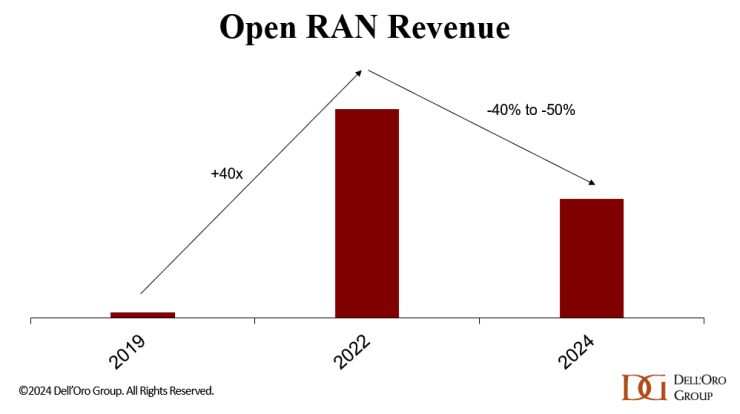The Open RAN market, which saw rapid growth between 2019 and 2022, continues to face hurdles in 2024, according to the latest RAN report.

Stefan Pongratz, VP of RAN Market Research at Dell’Oro Group, in a blog post, discussed the challenges Open RAN is facing in 2024, including a 30 percent decline due to slowed 5G adoption and delays in technology readiness.
After a sharp $0.5 billion decline in revenue during 2023, Open RAN investments have shown a 30 percent year-over-year drop for the 1Q24-3Q24 period.
The decline in Open RAN spending is attributed to challenges in the 5G markets in Japan and the US, as well as delays in the commercial adoption of next-generation O-RAN ULPI technologies.
Virtualized RAN (vRAN): Revenue is down 15 percent for the same period.
Top Open RAN Suppliers: Samsung, NEC, and Fujitsu lead the market based on global revenues.
Top vRAN Suppliers: Samsung, Fujitsu, and Ericsson top the list.
Open RAN is expected to make up a mid-single-digit share of the 2024 RAN market and 8–10 percent of combined proprietary and Open RAN revenues by 2025.
The global Open RAN market is transitioning from large-scale greenfield deployments to modernization projects, which are slow to materialize. The immediate focus is on boosting 5G activity in key regions and advancing O-RAN ULPI technologies. While the long-term potential of Open RAN remains promising, the near-term outlook is clouded by uncertainties, particularly in mature markets like the US and Japan.
Baburajan Kizhakedath
